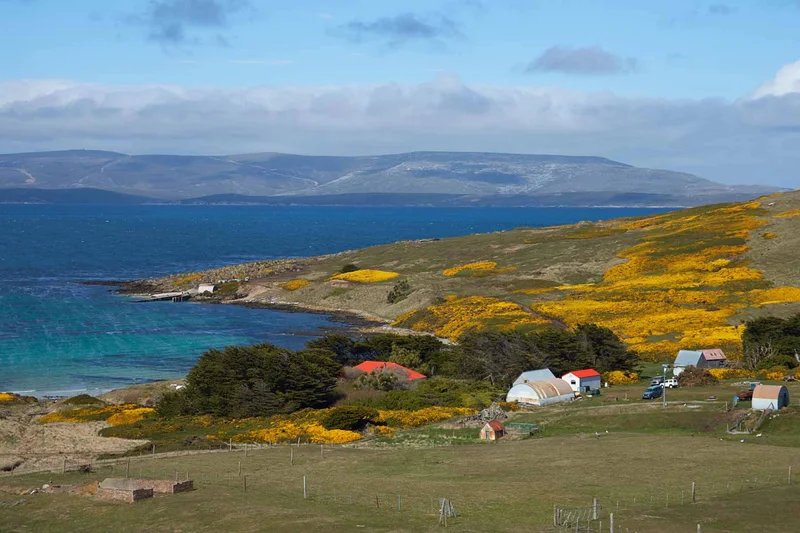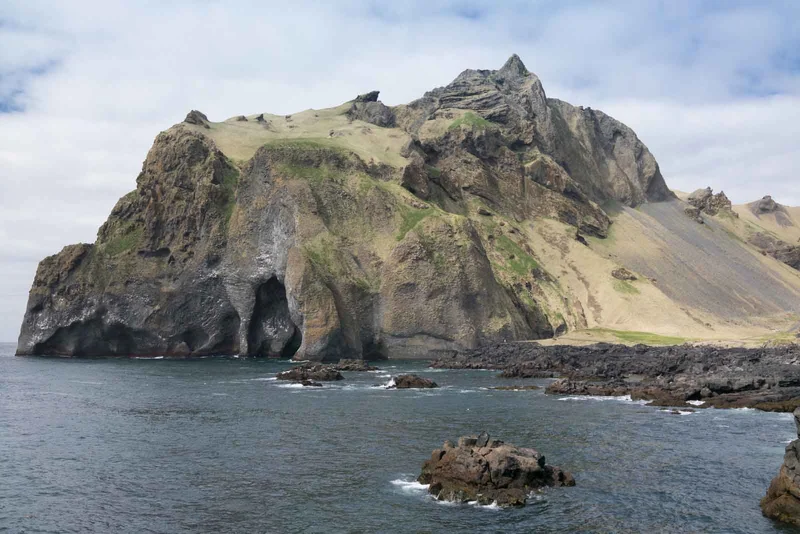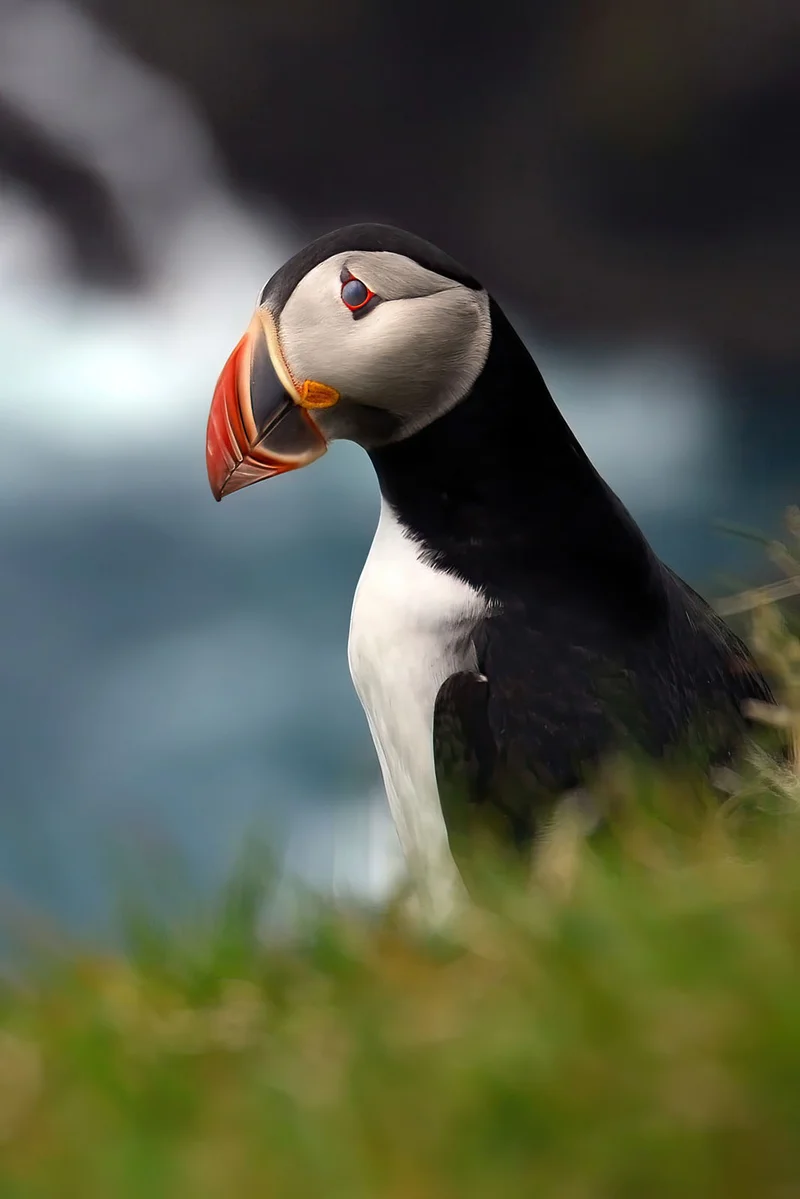
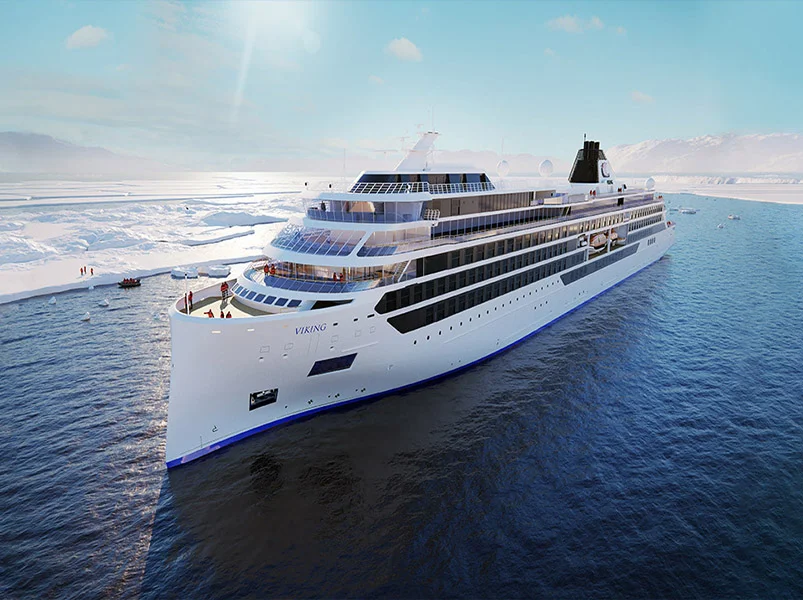
From the Antarctic Tundra to the Great Lakes
Journey from Antarctica’s untouched wilderness to the storied waters of the Great Lakes, discovering breathtaking landscapes and dynamic cities along the way. Cruise along Chile’s pristine coastline, navigate the iconic Panama Canal, and soak up the tropical allure of The Bahamas. Experience the colonial and maritime heritage of eastern Canada, marvel at the majesty of Niagara Falls, and explore vibrant destinations like Toronto and New York. For an even greater adventure, embark on optional overland excursions to Machu Picchu and the Galápagos as you traverse the wonders of the Western Hemisphere.
63 Day Antarctica Itinerary
Day 1: Buenos Aires, Argentina
Upon arrival, check in to your hotel and settle into the vibrant energy of Buenos Aires, Argentina’s cosmopolitan capital. This dynamic city blends Latin passion with European charm, reflected in its tree-lined avenues and postcolonial architecture influenced by Spanish, French, and Italian heritage. While its lively cafés, bodegas, and bustling nightlife are quintessentially Argentine, its diverse barrios (neighborhoods) create an inviting, intimate feel despite the city's vast size. The historic district of San Telmo, with its cobblestone streets and elegant Belle Époque buildings, exudes bohemian charm, where the haunting melodies of tango fill the air.
Day 2: Ushuaia, Argentina
After breakfast, check out of your hotel and board your charter flight to your embarkation city. Ushuaia, the world’s southernmost city, is nestled between the Beagle Channel and the rugged, snow-capped slopes of the Andes, giving it a remote, frontier-like atmosphere. The city is a hub for Antarctic explorers preparing for expeditions that set sail from its port. As the capital and gateway to the famed Tierra del Fuego—Spanish for "Land of Fire"—Ushuaia carries a name inspired by the perpetual fires once kept burning by the indigenous Yámana people for warmth. This largely untouched region includes the vast island of Tierra del Fuego along with numerous Chilean and Argentine islands scattered throughout its waters.
Day 3: Sail the Drake Passage
The icy waters of the Drake Passage, named after 16th-century English privateer Sir Francis Drake, span approximately 600 miles between Cape Horn and Livingston Island in the South Shetland archipelago. While sailing through this legendary route, immerse yourself in knowledge and discovery at The Aula, one of the most advanced learning spaces at sea. Whether attending an engaging lecture or watching a film on the cutting-edge 8K laser-projected panoramic screen, you’ll enjoy an unparalleled experience. With its retractable floor-to-ceiling windows offering breathtaking 270° views, this indoor-outdoor venue places nature at the heart of your journey.
Day 4-10: Explore Antarctica
Antarctica, both otherworldly and awe-inspiring, has captivated explorers and adventurers for generations. This frozen wilderness is a land of striking contrasts—serene bays dotted with glistening icebergs and towering, snow-covered mountains rising from rugged basalt cliffs. Its breathtaking scenery offers moments of peaceful solitude, as fur seals rest atop drifting ice sheets, and powerful spectacle, as glaciers dramatically calve into the sea. The nutrient-rich, frigid waters surrounding the continent are home to magnificent marine life, where humpback, fin, and immense blue whales often appear alongside expedition ships venturing into their remote domain.
Day 11: Sail the Drake Passage
The Drake Passage is infamous for having some of the most turbulent waters on the planet. Crossing it meant facing towering waves, hurricane-strength winds, and frigid conditions that pushed both sailors and their vessels to the limit. While at sea, rejuvenate your body, mind, and spirit in our Scandinavian-inspired Spa, a serene Nordic retreat focused on holistic wellness. Whether you relax in the Sauna, cool off in the Snow Grotto, or immerse yourself in the Thermal Pool, you’ll emerge refreshed and revitalized.
Day 12: Scenic Sailing: Cape Horn
Towering over the meeting point of the Atlantic and Pacific Oceans, Cape Horn—named after the Dutch city of Hoorn—is part of the remote Hermite Islands archipelago. Often regarded as the southernmost point of the South American continent, this rugged, treeless landscape is both stark and awe-inspiring. Rising from Hornos Island is a massive, prehistoric-looking formation of Jurassic volcanic rock, adding to the dramatic scenery. Perched near the water’s edge, the historic lighthouse has served as a guiding beacon for sailors since 1991, standing as the world’s southernmost traditional-style lighthouse.
Day 13: Ushuaia, Argentina
Often called the "city at the end of the world," Ushuaia is one of the most awe-inspiring destinations on Earth. Set against a stunning backdrop of towering Andean peaks, pristine lakes, and dense boreal forests, this coastal town is truly captivating. Though located more than 600 miles north of Antarctica, its port remains the closest gateway to the "Last Continent" and a primary departure point for expeditions. Antarctica's breathtaking landscapes, from vast ice plains to rugged mountains, draw adventurous travelers eager to witness its incredible wildlife, including whales, seals, and numerous species of penguins.
Day 14: Scenic Sailing: Cape Horn
Known as Cabo de Hornos in Spanish, Cape Horn is a dramatic, steep headland situated at the southernmost tip of mainland South America on Hornos Island, part of the Tierra del Fuego archipelago. It serves as the northern boundary of the Drake Passage, where the Atlantic and Pacific Oceans converge. First rounded in 1616 by Dutch navigator Willem Schouten and Belgian Jacob Le Maire, the cape remains infamous for its perilous sailing conditions. Navigating these waters is notoriously challenging due to powerful winds, towering waves, fierce currents, and the ever-present threat of drifting icebergs.
Day 15: Garibaldi Fjord, Chile
The crystal-clear waters of Garibaldi Fjord wind through Chile’s Alberto de Agostini National Park, where the Andes Mountains dramatically descend into the sea. Designated a UNESCO Biosphere Reserve, this untouched wilderness is home to a diverse array of wildlife. Towering valley walls are draped in ice, while floating icebergs drift alongside playful seals and sea lions. At the heart of the fjord, the immense Garibaldi Glacier, spanning 12 square miles, feeds its waters, creating a breathtaking sight that dwarfs any vessel navigating its icy expanse.
Day 16: Explore Chilean Glaciers
Straddling the border between Chile and Argentina, the Southern Patagonian Ice Field extends over 200 miles along the rugged spine of the Andes Mountains. Chile holds nearly 80% of South America's glaciers, covering approximately 7,700 square miles. These vast ice formations serve as vital freshwater reserves, supporting the diverse ecosystems and wildlife that thrive in the mountainous landscapes of Patagonia.
Day 17: Punta Arenas, Chile
Established as a penal colony by Chile in 1848, Punta Arenas sits on the eastern shores of the Brunswick Peninsula, surrounded by breathtaking mountain scenery. It became a key stop for mariners navigating the continent by sea, later attracting European settlers drawn by the discovery of gold and the opportunity to develop extensive sheep farms in the region. Over the years, Punta Arenas grew into one of Chile’s most significant ports, serving as a crucial point on the northernmost transcontinental shipping route before the opening of the Panama Canal.
Day 18: Scenic Sailing: Chilean Fjords
A breathtaking wilderness of towering peaks, verdant islands teeming with wildlife, and a network of glaciers and rivers flowing into glistening waters, Chile’s fjords are celebrated as one of the most untouched and remote regions on Earth. Their crystal-clear waters wind through expansive ice fields, steep mountain slopes, and picturesque fishing villages nestled along tranquil shores, all set against a stunning backdrop of forest-covered hills and dramatic landscapes.
Day 19-20: Explore Chilean Glaciers
During the last Ice Age, the massive Patagonian Ice Sheet blanketed southern Chile in thick layers of ice and snow. Around 12,000 years ago, rising temperatures triggered its retreat, sculpting the dramatic Patagonian landscape as it melted. Today, two vast remnants of this ancient ice sheet remain—the Northern and Southern Patagonian Ice Fields—spanning more than 5,400 square miles, making them the third-largest frozen landmass on Earth. At their fringes, towering glaciers of striking blue ice continuously reshape the landscape, calving immense icebergs that drift through the fjords and channels.
Day 21: Scenic Sailing: Chilean Fjords
Chile’s fjords and channels were originally home to indigenous peoples who crafted their canoes and dwellings from the wood of Pilgerodendron uviferum, a native conifer tree. Spanish conquistadors arrived in the mid-16th century, navigating the intricate waterways to evade the Pacific Ocean’s rough seas and unpredictable weather. However, the region’s harsh climate and dwindling indigenous populations hindered colonial expansion, leaving the fjords largely uninhabited—a characteristic that persists to this day.
Day 22: Puerto Chacabuco, Chile
Puerto Chacabuco, a small Patagonian enclave, serves as a gateway to the breathtaking beauty of Chile’s untamed wilderness. Named after the 1817 Battle of Chacabuco—a decisive victory in the Chilean War of Independence led by national hero José de San Martín and the Army of the Andes—the port is steeped in history. The surrounding landscape is a dramatic tapestry of jagged peaks, deep-carved gorges, and icy-blue glaciers cascading into the sea. Towering pine-green forests cling to steep slopes, making this remote region one of the most awe-inspiring and unspoiled destinations on Earth.
Day 23: Scenic Sailing: Chilean Fjords
The breathtaking Chilean Fjords span nearly 1,000 miles, stretching from Cape Horn at the southernmost tip of South America to the Reloncaví Estuary, just south of Puerto Montt. Shaped by retreating glaciers over 2.5 million years ago, this intricate network of channels and passages winds through towering walls of blue ice, lush forests, and dramatic mountain ranges. Along its rugged coastline, Magellanic penguins waddle along the shores, while elephant seals bask in the sun. The surrounding waters serve as a sanctuary for dolphins, migrating humpback whales, and orcas on the hunt.
Day 24: Sail the Pacific Ocean
Set sail across Mar Pacífico, or the "peaceful sea," a name given by Ferdinand Magellan nearly 500 years ago as he navigated these waters. While on board, indulge in a variety of exquisite dining options. Stop by Mamsen’s, a casual gourmet deli open from early morning to late at night, where you can enjoy traditional Norwegian specialties. For a taste of Italy, dine at Manfredi’s and savor authentic dishes, from rich Milanese risotto to timeless Tuscan-inspired favorites.
Day 25: Santiago (Valparaíso), Chile
Santiago, Chile’s vibrant capital, ranks among the largest cities in the Americas, showcasing a rich architectural heritage that spans centuries, from neoclassical and neo-Gothic to art deco styles. Serving as Santiago’s gateway, the coastal city of Valparaíso is often likened to San Francisco for its many cerros, or hills. Once a thriving port, Valparaíso flourished until the opening of the Panama Canal shifted global trade routes. Today, its charming Victorian-era architecture reflects its 19th-century prosperity, while steep, colorful neighborhoods are connected by ascensores (funiculars) and winding streets. From the hilltops, the panoramic views are truly breathtaking.
Day 26-27: Sail the Pacific Ocean
Journey across the vast Pacific Ocean, the largest on Earth, spanning nearly 64 million square miles—twice the size of the Atlantic. This immense ocean is one of striking contrasts and extremes. As you sail, take time to explore our thoughtfully curated Library, nestled in a quiet alcove of the Living Room, where you’ll find a diverse collection of books. Enjoy a relaxing read by the Main Pool, a serene retreat with a retractable roof that ensures a comfortable swimming experience in any season.
Day 28: Iquique, Chile
Iquique is beautifully situated between the Pacific Ocean and the Pampa del Tamarugal, a sprawling plateau within the Atacama Desert. Once part of Peru, the city flourished during the saltpeter mining era before being ceded to Chile in 1883 following the War of the Pacific. Today, Iquique showcases a wealth of architectural gems around its central Arturo Prat Square, including the grand Municipal Theater, the elegant Casino Español, and a distinctive Clock Tower blending Gothic and Moorish influences. The city's charming Georgian-style homes, remnants of the 19th-century mining boom, add to its rich historical character.
Day 29-30: Sail the Pacific Ocean
Cruise across the vast Pacific Ocean, which spans more than 30% of the Earth's surface and connects the continents of Asia, Australia, North America, and South America. As you journey through these legendary waters, unwind in the Explorers’ Lounge, designed to evoke the spirit of great voyages. Take in the breathtaking scenery through towering two-story panoramic windows while enjoying a cocktail with friends or immersing yourself in a good book in a serene and inviting setting.
Day 31: Lima (Callao), Peru
Lima, founded in 1535 by Francisco Pizarro as La Ciudad de los Reyes or the "City of Kings," quickly became the capital of Spain’s Viceroyalty of Peru. It is home to the oldest university in the Americas, the National University of San Marcos. As one of South America’s most vibrant and cosmopolitan cities, Lima boasts a stunning architectural legacy that spans centuries, featuring colonial-era structures, Spanish baroque designs, neoclassical facades, and Art Nouveau masterpieces. Its historic center, adorned with hundreds of elegant balconies from the viceroyalty period, is recognized as a UNESCO World Heritage Site.
Day 32-34: Sail the Pacific Ocean
Sail across the vast Pacific Ocean and discover its remarkable geology, home to over 75,000 volcanoes, many of which remain active beneath its depths. As you journey across these legendary waters, take in the breathtaking views and indulge in an open-air dining experience. The Aquavit Terrace offers a diverse selection of international cuisine and casual dining favorites, complemented by expertly crafted cocktails inspired by the destinations along your voyage.
Day 35: Panama City (Fuerte Amador), Panama
Day 36: Scenic Sailing: Panama Canal
The Panama Canal serves as a vital link between the Pacific and Atlantic Oceans, traversing the narrowest section of the Isthmus of Panama. Spanning 48 miles, a complete passage through the canal takes approximately eight to ten hours, navigating key points such as Gatun Lake and the Culebra Cut—an impressive man-made valley carved through the Continental Divide. Hailed as one of the greatest engineering feats of the 20th century, the canal operates through a system of locks that raise and lower ships 85 feet above sea level, assisted by electric locomotives known as mulas. Crossing the Panama Canal is a remarkable journey and a true rite of passage for travelers.
Day 37: Sail the Caribbean Sea
Cruise through shimmering turquoise waters steeped in legends of daring pirates, swashbuckling adventures, and hidden treasures. Take in the breathtaking views from the Finse Terrace, a one-of-a-kind outdoor lounge inspired by the renowned mountain plateau in south-central Norway. Unwind in absolute comfort, surrounded by heated couches and lava rock “firepits,” ensuring a cozy atmosphere regardless of the temperature. Whether admiring the dramatic landscapes or gazing out over the endless ocean, this serene retreat offers the perfect vantage point for a truly unforgettable journey.
Day 38: Port Antonio, Jamaica
Port Antonio, the capital of Portland Parish, is a gateway to some of Jamaica’s most breathtaking natural wonders. Visitors can immerse themselves in the island’s lush rainforests or take in the stunning coastal views from its pristine beaches. Frenchman’s Cove Beach and San San Beach, known for their picturesque beauty, offer the perfect setting for a peaceful afternoon by the sea. One of the area’s most iconic attractions, the Blue Lagoon, provides a unique swimming experience with its blend of warm and cool waters, fed by an underwater spring—an ideal spot for snorkeling or a refreshing dip.
Day 39: Man of War Bay (Great Inagua), Bahamas
Man of War Bay lies within the tranquil and mostly uninhabited Great Inagua Island, offering a stunning natural retreat. Its turquoise waters gently meet pristine white-sand beaches, set against a backdrop of lush vegetation and rugged landscapes. Encircled by mangroves and saltwater flats, the bay supports a rich and diverse ecosystem. Beneath its crystal-clear waters, vibrant corals and colorful tropical fish thrive, while the surrounding wetlands provide a sanctuary for numerous bird species. Among them, flamingos stand out, their brilliant pink plumage adding a breathtaking touch to the bay’s picturesque scenery.
Day 40: San Salvador Island, Bahamas
San Salvador, a secluded treasure within the Bahamas archipelago, boasts both breathtaking natural beauty and rich historical significance. Its powdery white sand beaches and crystal-clear waters create a picture-perfect paradise. The island’s vibrant marine ecosystems, featuring shallow coral reefs and mysterious blue holes, make it a haven for divers and snorkelers, while its unspoiled coastal landscapes and tranquil cays appeal to nature lovers in search of serenity. According to historical records, this island is also believed to be the first landfall of Christopher Columbus in the Americas in 1492.
Day 41-43: Sail the Atlantic Ocean
Journey across the vast Atlantic Ocean, where the Mid-Atlantic Ridge stretches from north to south, splitting its waters in two. This immense underwater mountain range, longer than the Rockies, Himalayas, and Andes combined, holds the title of the longest on Earth. Enjoy a tranquil day at sea, unwinding as you take in breathtaking views from the comfort of your stateroom veranda.
Day 44: New York City, New York, United States
New York City is a captivating blend of romance and excitement. From the bustling streets of Lower Manhattan’s financial district to the charming, winding lanes of Greenwich Village, the city is rich in culture, cuisine, and stunning architecture. There’s something for everyone—music enthusiasts can admire the acoustics of Carnegie Hall or experience the soul of jazz and blues in Harlem. Romantics can take a horse-drawn carriage ride through Central Park, while art lovers explore masterpieces at the Museum of Modern Art or the Guggenheim. And for theater fans, Broadway offers world-class performances set against the dazzling lights of Times Square.
Day 45: Sail the Atlantic Ocean
Set sail on legendary waters once shrouded in medieval myths, where early Europeans believed dragons lurked beyond the horizon. Today, enjoy a voyage of comfort and discovery in the Explorers’ Lounge, designed to evoke the spirit of epic journeys. Take in breathtaking views through floor-to-ceiling panoramic windows as you sip a cocktail with friends or unwind with a good book in a serene setting.
Day 46: Halifax, Nova Scotia, Canada
Halifax carries a distinct European charm and sits along the rugged shores of the Atlantic Ocean. Those arriving by sea are welcomed by the historic Sambro Island Lighthouse, built in 1758 and recognized as the oldest surviving beacon in North America. In the harborside Historic Properties district, cobblestone streets are lined with elegant stone buildings dating back to the 18th and 19th centuries. The city developed around Citadel Hill, where Fort George once stood guard over the harbor. Today, both the fortress and the iconic Halifax Town Clock have been beautifully restored and preserved, reflecting the city’s rich history.
Day 47: Halifax, Nova Scotia, Canada
Halifax owes its existence to its deep natural harbor, one of the deepest in the world. Established by the British in 1749, the city took a different path from other coastal colonial settlements, thriving not on fishing but on naval activities. It became a key military base for the British following the American Revolution and later served as Canada’s primary wartime port during World War II, a period that reshaped the city with an influx of military personnel and foreign nationals. Their experiences are preserved at the Museum of Immigration at Pier 21, the very place where many first arrived in Halifax.
Day 48: Sydney, Nova Scotia, Canada
Sydney, the largest city on Cape Breton Island, sits along the southeastern arm of Sydney Harbour, near the mouth of its namesake river. Established in 1785 by the British and Loyalists fleeing the United States after the American Revolution, it served as the island’s capital until 1820, when Cape Breton was incorporated into Nova Scotia. The area’s coal mines attracted waves of immigrants throughout the 19th century, and by the early 20th century, Sydney had grown into one of the world’s leading steel production hubs. Today, it remains Nova Scotia’s second-largest industrial center.
Day 49: Gros Morne National Park, Newfoundland and Labrador, Canada
Gros Morne National Park, a UNESCO World Heritage Site, lies along the west coast of Newfoundland. Spanning nearly 700 square miles, the park is interwoven with hiking trails and showcases a stunning variety of landscapes and ecosystems, from towering fjords and rugged mountains to dense forests and coastal plains. Dominating the skyline at 2,600 feet, Gros Morne Mountain stands as the park’s highest peak, while the stark terrain of the Tablelands reveals ancient geological formations dating back over a billion years. The park also serves as a habitat for diverse wildlife, including moose, caribou, and black bears.
Day 50: Havre-Saint-Pierre, Quebec, Canada
Havre-Saint-Pierre sits on the northern coast of the Gulf of St. Lawrence, just north of Anticosti Island. Originally settled by fishermen from the Magdalen Islands in 1857, its residents, known as Cayens, take great pride in their Acadian roots. While the village historically thrived on fishing and lumber, it now also serves as a transit port for ore transported from the Lac Allard mines. Surrounded by the breathtaking landscapes of the Canadian Shield, the area is famous for its rich biodiversity and the striking, weather-sculpted "monoliths" that add a touch of mystery to the scenery.
Day 51: Tadoussac, Quebec, Canada
Tadoussac is a quaint village in Côte-Nord, located where the St. Lawrence River meets the Saguenay Fjord. Originally established as a key trading post by French explorers in 1599, it has preserved its rustic charm over the centuries. Surrounded by the striking landscapes of the fjord, it lies near several natural and provincial parks, including Canada’s first maritime national park. Each summer, the waters of Tadoussac Bay welcome a variety of whale species, such as minke, humpback, fin, and blue whales, while beluga whales make this area their permanent home.
Day 52: Quebec City, Quebec, Canada
Quebec City is often considered the most French-influenced city in North America. The iconic Château Frontenac, perched atop the Old Town, resembles the grand castles of France’s Loire Valley. The city’s winding, cobblestone streets are lined with white-stone buildings, reminiscent of medieval European villages. The only walled city in North America outside of Mexico, Quebec City was fortified in the 17th century to secure its strategic location atop Cape Diamond, offering a commanding view of the St. Lawrence River.
Day 53: Trois-Rivières, Quebec, Canada
Trois-Rivières, the cultural heart of Quebec’s Maurice region, was founded in 1634, making it the second permanent settlement in New France after Quebec City. It played a crucial role in fur trading with Indigenous nations. Its English name, “Three Rivers,” reflects its location where two islands split the Saint-Maurice River into three channels before it joins the St. Lawrence River. Today, the city’s Old Town is adorned with elegant century-old buildings that add to its historic charm.
Day 54: Scenic Sailing: St. Lawrence Seaway Locks
The St. Lawrence Seaway is a remarkable engineering achievement, featuring a network of locks, canals, and channels that enable ships to navigate from the Atlantic Ocean up the St. Lawrence River to Lake Superior. Between Montreal and Lake Ontario, seven locks help vessels bypass rapids and dams, while the 27-mile Welland Canal lifts ships over the Niagara Escarpment, avoiding Niagara Falls. Jointly operated by Canada and the United States, this vital waterway, often called “Highway H2O,” plays a crucial role in regional trade and transportation.
Day 55: Toronto, Ontario, Canada
Toronto is celebrated as one of Canada’s most dynamic and forward-thinking cities. Nestled along the shores of Lake Ontario, overlooking the scenic Toronto Islands, it was established in 1793 by British loyalists escaping the American Revolution. Today, the city invites exploration on foot, from the charming Victorian bay-and-gable homes of Rosedale to the historic Wychwood Park, a designated Ontario Heritage Conservation district. The Distillery District stands as a cultural highlight, showcasing North America’s largest preserved collection of Victorian industrial architecture.
Day 56: Toronto, Ontario, Canada
Toronto is a vibrant, multicultural city where diverse communities contribute their unique customs, traditions, and cuisine. With over half of its residents born outside the city, its neighborhoods reflect global influences—Greektown, Little Italy, Koreatown, and Chinatown offer a flavorful glimpse into its rich cultural tapestry. One of Toronto’s historic gems, St. Lawrence Market, has been a hub of commerce since 1803. Today, visitors can explore its bustling stalls filled with fresh local produce, artisanal goods, and antiques.
Day 57: Niagara Falls (Port Colborne), Ontario, Canada
Known as the “Gateway to Navigation,” Port Colborne provides access to one of North America’s greatest natural wonders—Niagara Falls. This breathtaking cascade sends 42 million gallons of water plummeting 20 stories every minute. Spanning both the U.S. and Canada, the falls are divided into three sections: Horseshoe Falls, Bridal Veil Falls, and American Falls. Once a famed honeymoon destination, today it remains an awe-inspiring attraction for visitors worldwide.
Day 58: Point Pelee, Ontario, Canada
Point Pelee is a pristine peninsula extending into Lake Erie from Ontario, gradually tapering before merging with the water. This unique landscape features woodlands and the largest freshwater marshes in the Great Lakes. Designated a national park in 1918 and protected under the Ramsar Convention for wetlands conservation, it is a haven for wildlife. Positioned along two major bird migration routes, Point Pelee has recorded around 350 bird species. Boardwalks guide visitors through this remarkable ecosystem of open vistas and wave-swept shores.
Day 59: Detroit, Michigan, United States
Detroit, located along one of the four straits connecting the Great Lakes to the St. Lawrence Seaway, has grown into a cultural powerhouse. In 2015, it became the first U.S. city designated a “City of Design” by UNESCO for its innovative urban development. Founded as a French fort in 1701, Detroit later became the heart of the American automobile industry. It is also the birthplace of Motown, a name blending “motor” and “town.” The city’s waterfront showcases striking postmodern and Art Deco skyscrapers, reflecting its rich architectural heritage.
Day 60: Alpena, Michigan, United States
Located in northeastern Michigan’s Lower Peninsula, Alpena sits on the shores of Thunder Bay along Lake Huron. The town is home to Alpena Light, a striking red steel lighthouse built in 1914. Founded in 1840, Alpena originally thrived on fishing and logging and today hosts one of the world’s largest limestone quarries. Architectural landmarks such as the Art Deco-style County Courthouse and the late-Victorian IOOF Centennial Building—once the city’s courthouse—are listed on the National Register of Historic Places.
Day 61: Mackinac Island, Michigan, United States
A step back in time, Mackinac Island is a picturesque jewel of the Great Lakes. Nestled in the Straits of Mackinac, where Michigan’s upper and lower peninsulas nearly meet, this charming retreat maintains its Victorian-era charm along streets where only horse-drawn carriages are permitted. The island’s scenic perimeter road is the only state highway in the U.S. that bans motor vehicles. More than 80% of Mackinac is protected as a state park, offering historic sites like the Greek Revival-style Grand Hotel and the 18th-century British-built Fort Mackinac amid untouched natural beauty.
Day 62: Milwaukee, Wisconsin, United States
Milwaukee’s European roots date back to 1818 when French-Canadian fur trader Solomon Juneau settled in the area. Over time, German, Polish, and Eastern European immigrants arrived, introducing a rich beer-brewing tradition. By the 20th century, Milwaukee had earned its reputation as the world’s top beer producer. Today, the city thrives as a hub of art, history, and culture. Visitors can explore the scenic RiverWalk, a pedestrian path along the Milwaukee River, perfect for leisurely strolls and admiring public art installations.
Day 63: Milwaukee, Wisconsin, United States
Say goodbye to your fellow travelers and head home, or extend your adventure with additional exploration on one of our tours.
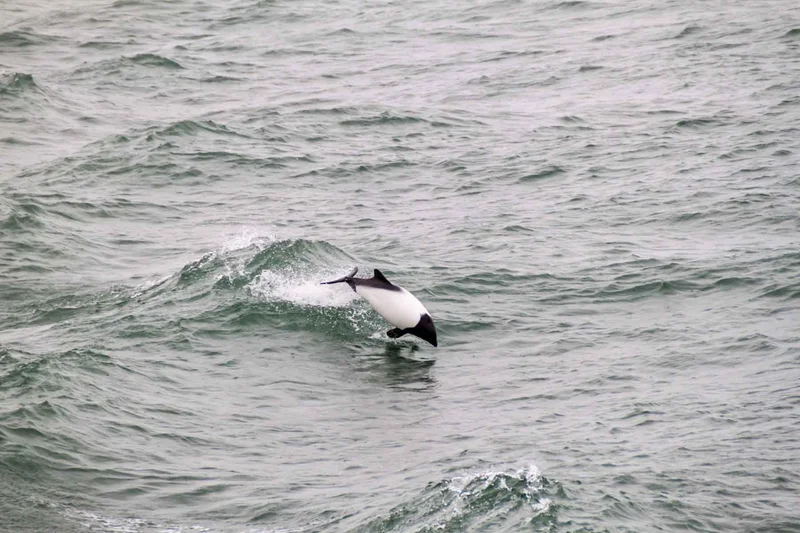
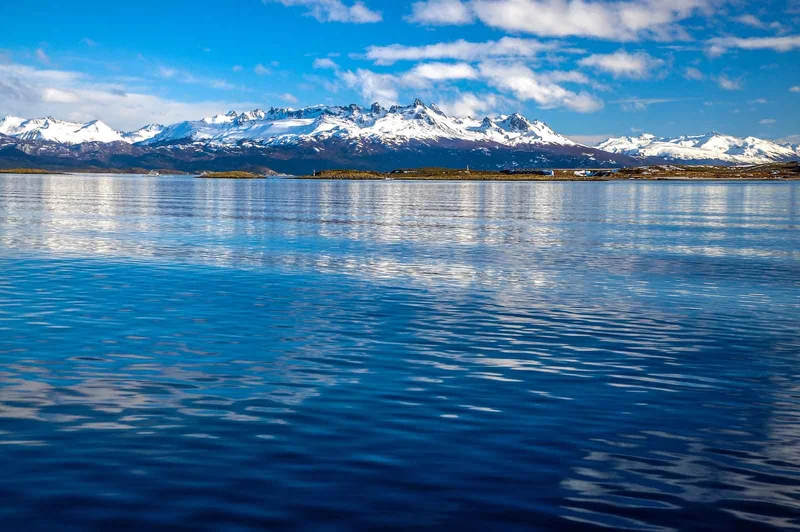
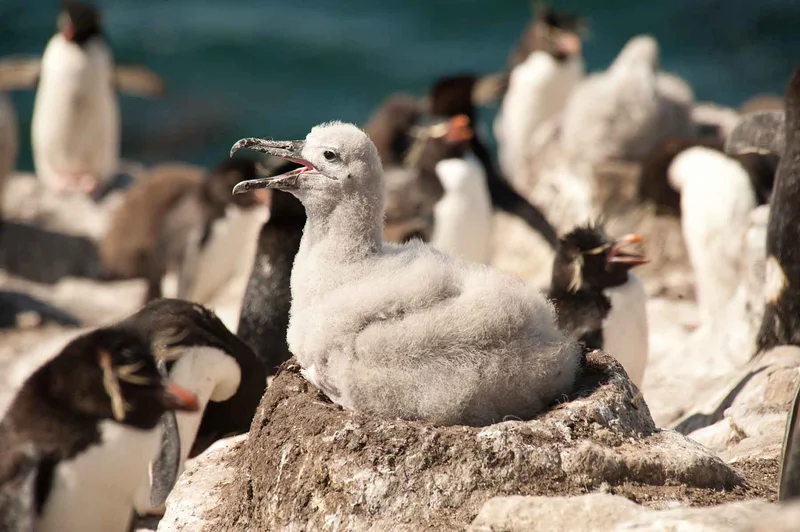
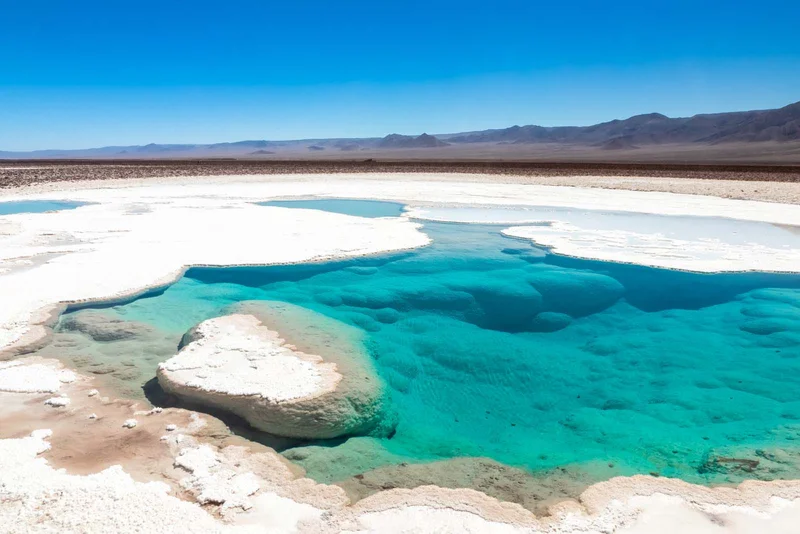
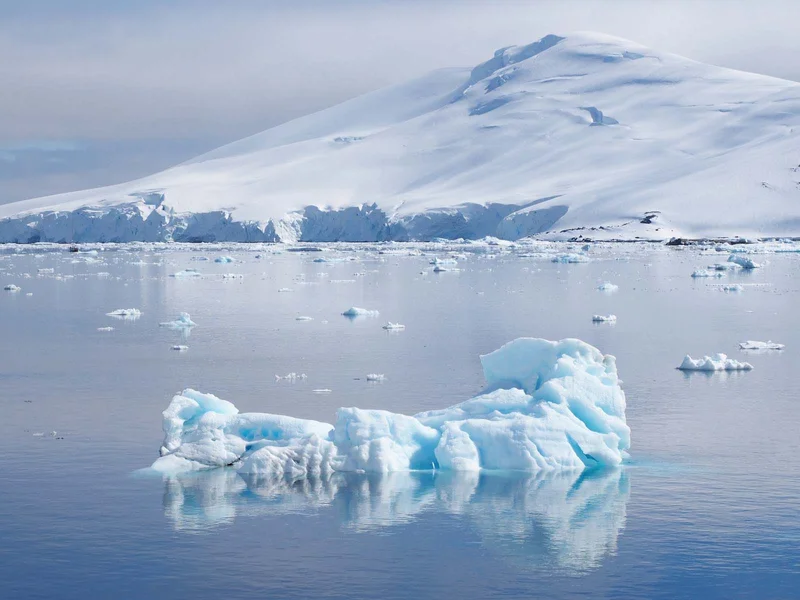
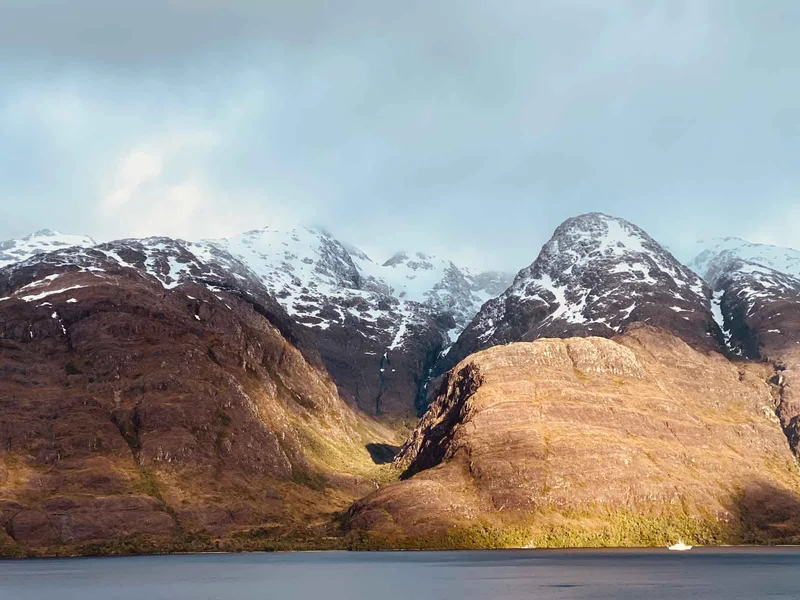
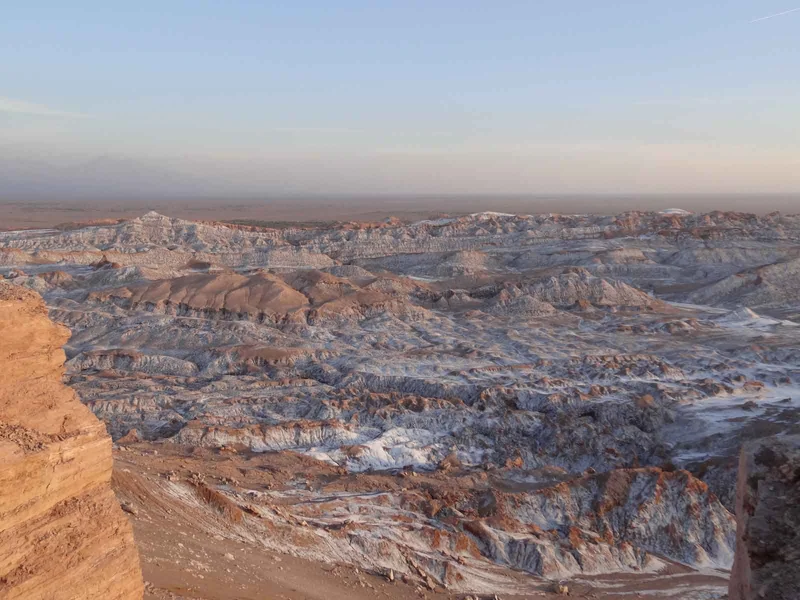
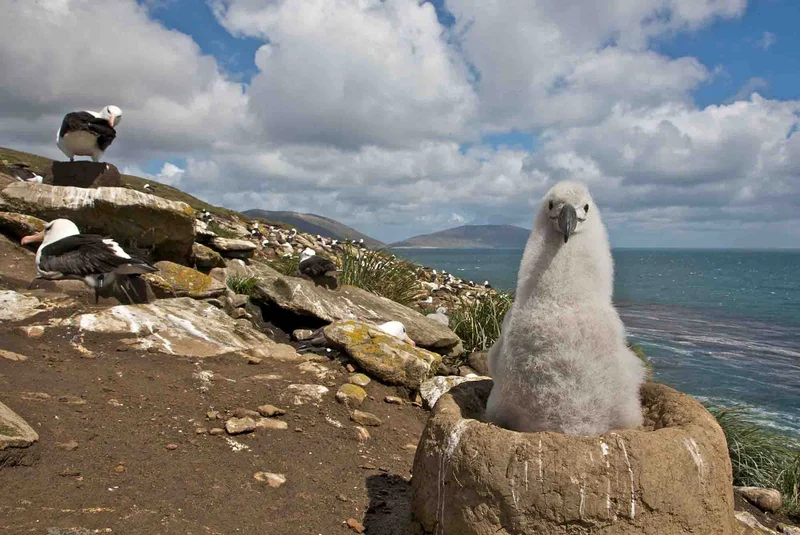
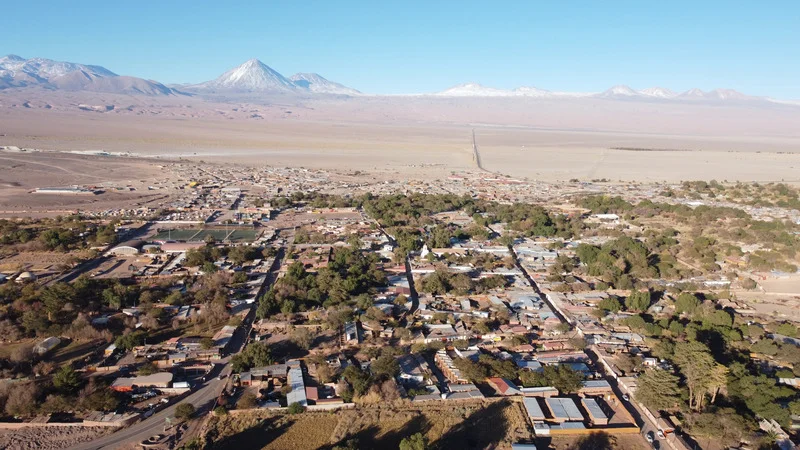
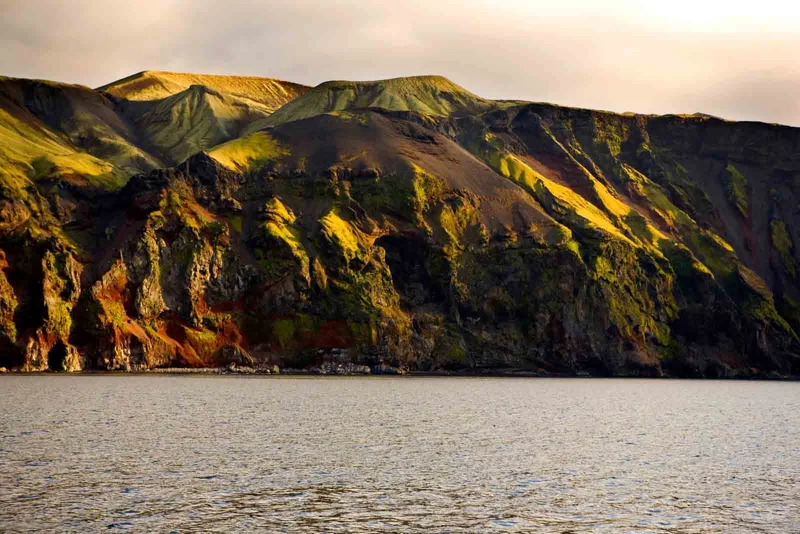
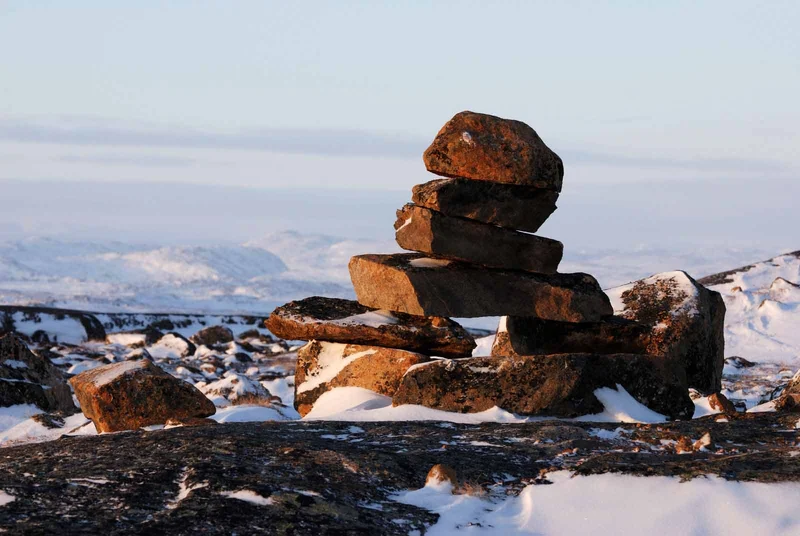
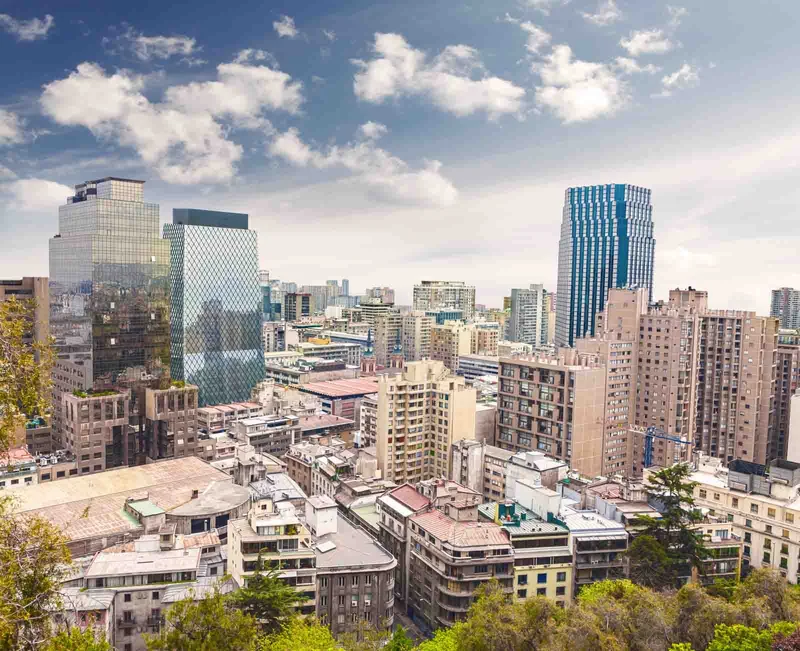
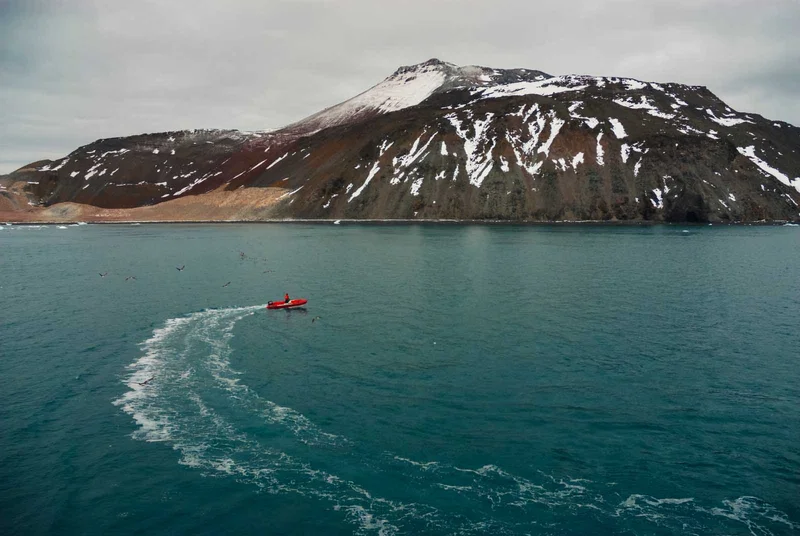
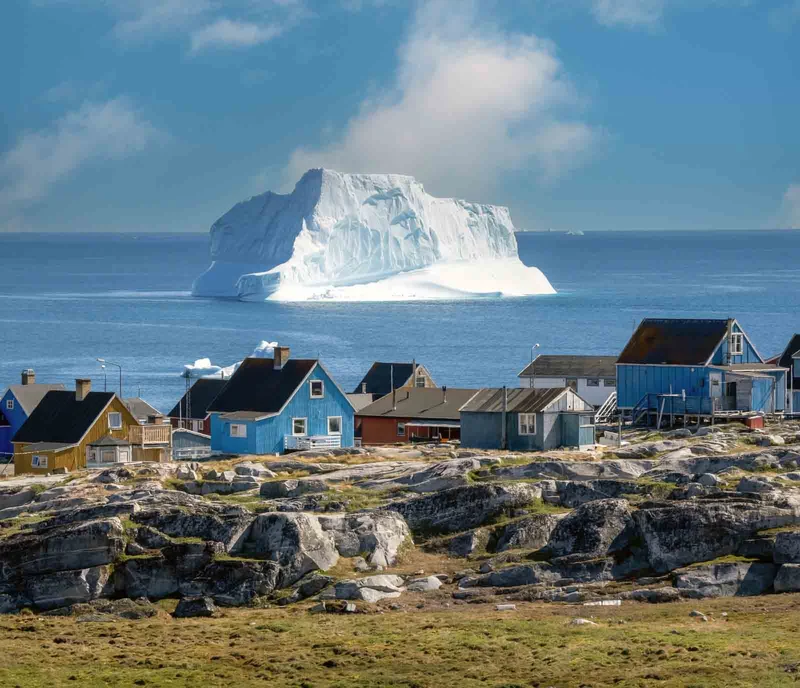
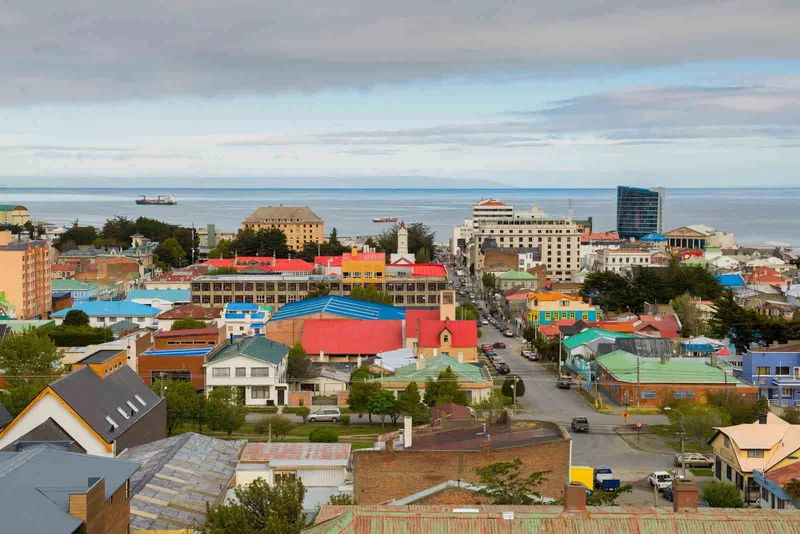
63 Day Antarctica Itinerary Highlights
- Cruise from Antarctica’s wild landscapes to North America’s Great Lakes
- Explore Chile’s coastline, the Panama Canal, and The Bahamas
- Discover Niagara Falls, Toronto, New York & Canada’s maritime heritage
- Optional overland excursions to Machu Picchu and the Galápagos
Itinerary Map
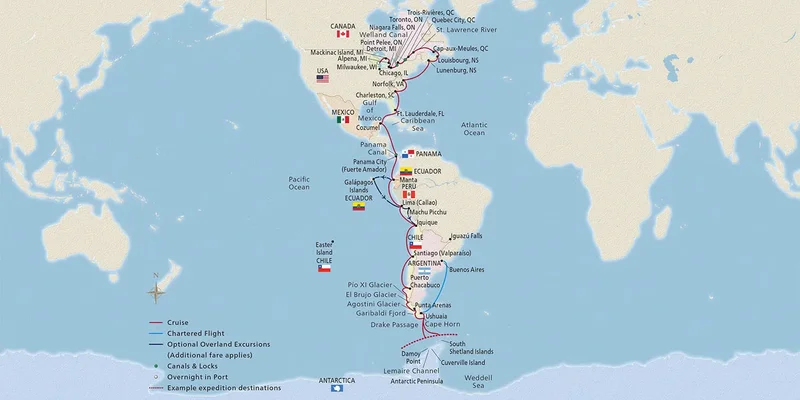
63 Day Antarctica cruise activities
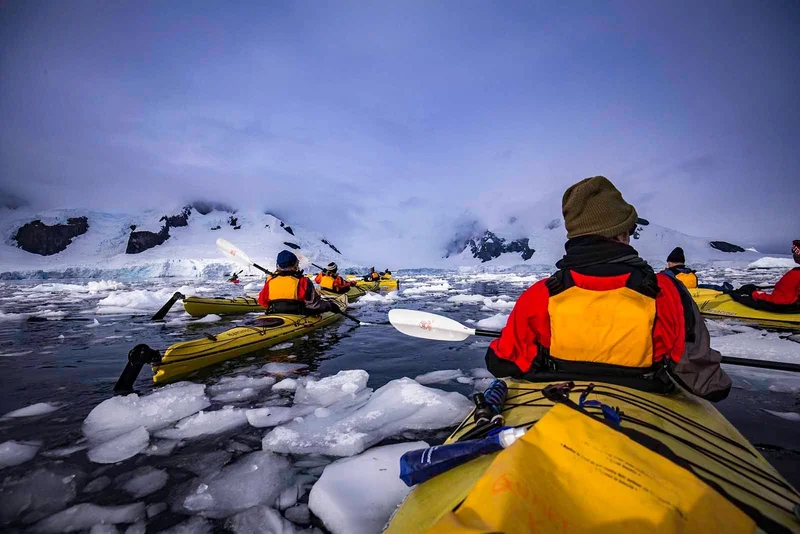
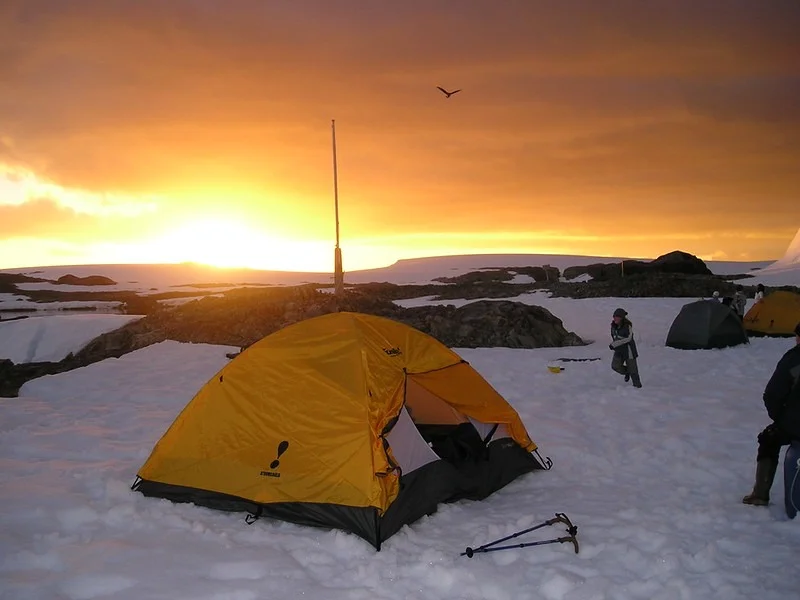
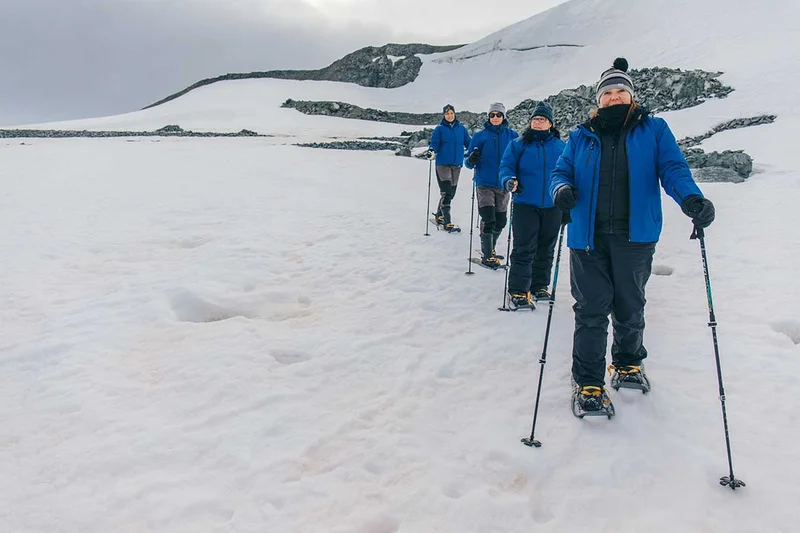
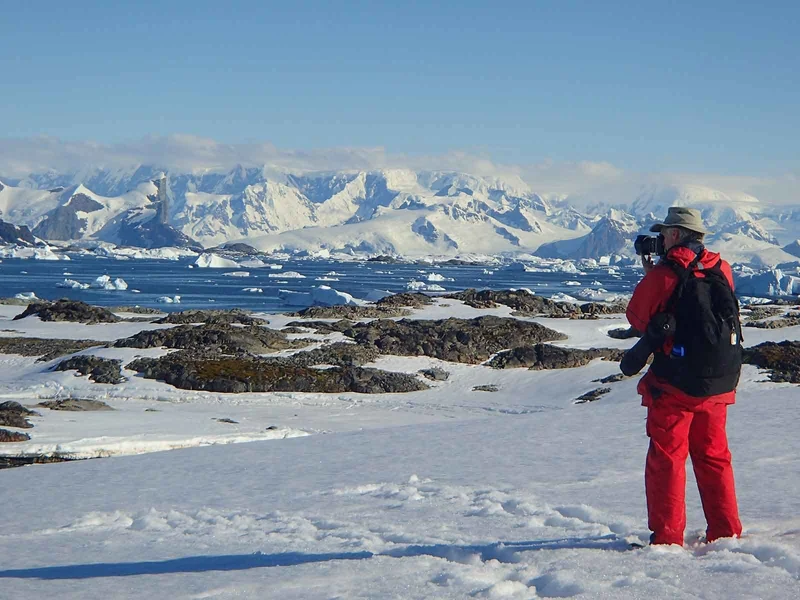
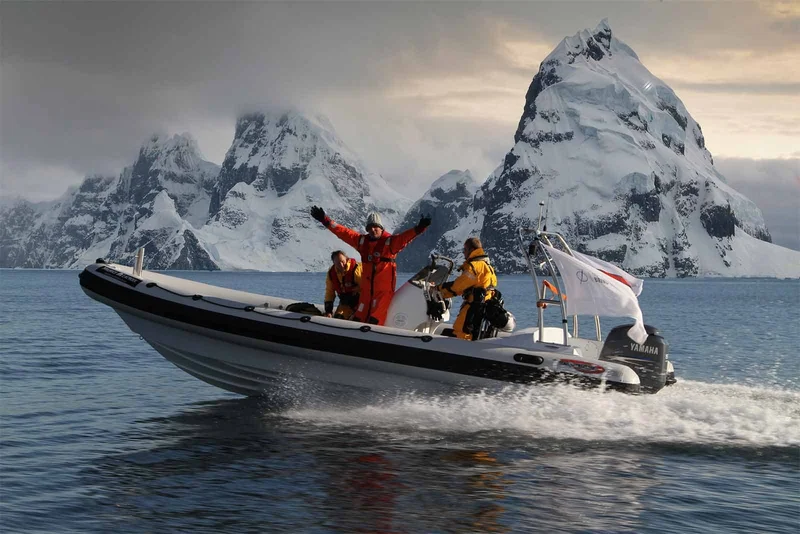

Animals you might see on this itinerary
Why travel with us?
Would you like to know why booking with us is the best choice?
Discover the BenefitsSimilar Itineraries

